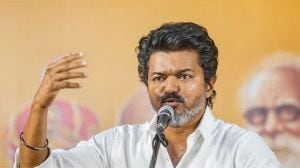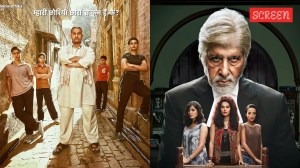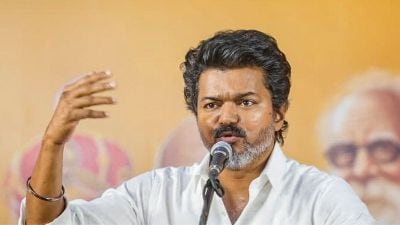We have a duty to inform students in places like Gadchiroli about opportunities in art education: Dr Kishor Ingle
Dr Kishor Ingle, Director, Directorate of Art, Maharashtra, speaks to Pallavi Smart on plans to expand access to art education, especially the rural areas.
 Dr Kishor Ingle, Director, Directorate of Art, spoke on plans to expand access to art education, especially in the rural areas, through initiatives such as “school connect".
Dr Kishor Ingle, Director, Directorate of Art, spoke on plans to expand access to art education, especially in the rural areas, through initiatives such as “school connect".Maharashtra’s Directorate of Art is all set to start “school connect” programmes to raise awareness about higher education opportunities in the field of art, such as drawing, painting, sculpting, photography, and fine arts, aiming to increase enrolment in art courses from across the state.
Dr Kishor Ingle, Director, Directorate of Art, spoke to Pallavi Smart on plans to expand access to art education, especially in the rural areas, through initiatives such as “school connect”, a substantial increase in cash prizes awarded for state-level drawing competitions, exhibitions, and district-level art galleries offering local platforms to artists.
Q: What is the ‘school connect’ initiative?
Dr Kishor Ingle: Designed on the lines of a similar initiative taken to increase enrolment in engineering diploma courses by the Directorate of Technical Education (DTE), the “school connect” programme will include reaching out to school students in various parts of Maharashtra to educate them on various opportunities in Art education. After Class 10, mostly students and parents start thinking of conventional higher-education options, partly also because of their unawareness about other avenues. This is why we plan to reach school students, particularly those in Classes 10, 11, and 12, to raise awareness about various opportunities in art education. We are creating communities of art teachers to identify schools having a substantial student intake, with plans to conduct day-long seminars about opportunities in art education. For example, the field of photography has such a wide scope in today’s time, with the requirement of skilled manpower in almost all areas, the wedding industry being just one example.
Q: What are other initiatives?
Dr Kishor Ingle: The directorate has been conducting state-level drawing competitions for school students. Winners of this competition will now see their work at a state-level art exhibition, ensuring a broader platform to showcase talent at a young age. Under an initiative taken by Higher and Technical Education Minister Chandrakant Patil, cash prizes for winners of this competition as well as for meritorious students taking popular art exams—elementary and intermediate—have been increased substantially. For example, in the state-level drawing competition for schoolkids, the first prize has gone up from Rs 300 to Rs 10,000. Similar increases in cash prizes are announced for elementary and intermediate exams, too. With the formation of the Maharashtra State Board for Art Education, there is now an independent body to increase the reach of these exams so that students from across Maharashtra appear for the exams.
Q: The opportunities for higher education in art are mostly found in big cities. A lot of talented students from the rural parts of Maharashtra are not even aware of such opportunities.
Dr Kishor Ingle: Coming from the interiors of Maharashtra, I am well aware of this fact. Thus, the “school connect” programme is not limited to big cities but will see seminars being held in rural parts of the state, too. I find it to be the responsibility of the directorate to reach out to students growing up in places such as Gadchiroli and Nandurbar and educate them on opportunities in art education.
Furthermore, to provide a platform for local talent, the art directorate is working on a plan to build district-level art galleries, while one is already in the making in collaboration with the Nagpur municipality.
Q: In line with the National Education Policy 2020, are there any changes expected in art education, such as curriculum revision, industry connect exposure…?
Dr Kishor Ingle: We are conducting a survey to gather information on existing courses, current industry needs, and future prospects to design new courses. The focus will be on offering technology-oriented courses in art education, considering the changing times. Even as a curriculum overhaul is still under discussion, our courses have already been converted into a semester pattern as recommended by the NEP. Semesters V and VI require students to do internships, which ensures adequate industry exposure. This leads to many of our students having a job offer by the time they finish the course.
Q: What is the status of the new campus of JJ School of Art?
Dr Kishor Ingle: JJ School of Art is growing, more so with the new status of a deemed-to-be university. But with limited space and heritage structures on the original campus, there are limitations to grow. For expansion, the plan is to have a sub-campus in a five-acre space in Vikhroli. A proposal in this regard will be presented in the winter assembly session by the minister.







